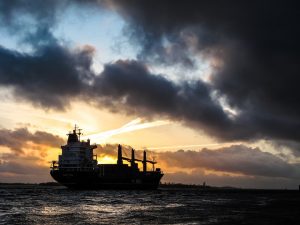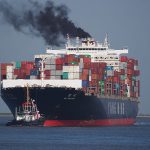2020 Outlook for Ocean Shipping
This is a guest post by Sandy Burkhart.
 Have you already started planning your shipping activities for the year that’s just started? Then you might want to consider learning all about the incoming changes, difficulties, trends, and opportunities that could have an impact on your shipping activities. In order to create a realistic 2020 outlook for ocean shipping, one first has to be aware of the current trends. After all, we can’t expect the current situation not to have an effect on future events.
Have you already started planning your shipping activities for the year that’s just started? Then you might want to consider learning all about the incoming changes, difficulties, trends, and opportunities that could have an impact on your shipping activities. In order to create a realistic 2020 outlook for ocean shipping, one first has to be aware of the current trends. After all, we can’t expect the current situation not to have an effect on future events.
2019 Was a Relatively Calm Year
What the majority of freight forwarders know is that, unlike what we saw in 2018, last year came with few events that negatively impacted shippers. There were no massive cybersecurity breaches, no carrier liquidation, and — despite the U.S.-China trade war — the global market was relatively stable. As of right now, freight forwarders worldwide have a chance to prepare themselves and focus on strengthening their presence in the year to come. However, before you start preparing a shipping strategy for your e-commerce business, you need to have all the necessary pieces of information about global trade and IMO 2020 regulations.
How Tariffs and Global Trade Impact 2020 Outlook for Ocean Shipping
What we have witnessed the previous year is a great number of shippers frontloaded goods to avoid tariff hikes between the U.S. and China. Tariffs sure escalated and changed as the year went on and ultimately resulted in a slowdown in ocean freight towards the end of the year. That slowdown was not just between the U.S. and China. Just to name an example, exports to Europe simmered down due to the challenge of Brexit as well as due to the challenges in EUR/USD exchange rates. So shipping your belongings over the ocean through means of ocean freight became a less favorable option last year. But it’s important to note that even though these challenges have somewhat slowed down import/export, ocean freight is still a necessary means of transporting large quantities of different goods.
On December 13th, the Phase One Trade Agreement with China was announced, with talks for Phase Two being announced for the foreseeable future. The agreement between the two countries calls on China to purchase up to $200 billion worth of US goods, with the US slashing in half the 15% duty imposed on $110 billion worth of imports. However, the rates on the remaining $250 billion of goods will remain unchanged. As expected, these tariffs are greatly impacting ocean freight at the moment. And the same impact isn’t likely to go away in the year that’s ahead.
A lot of companies worldwide are now turning to countries like Vietnam in hopes of them handling alterations and issues in supply chain management and strategies (China’s coronavirus outbreak adds to this resourcing of production). What carriers and logistics providers want to do is eliminate and avoid the challenge with different manufacturing locations in an attempt to create a more streamlined supply chain. There’s a very good chance that this twist of events will prevent any real ‘peak season’ in the year that’s ahead. Despite that, lots of experts still have a very positive 2020 outlook for ocean shipping, and one can only hope that their predictions will turn into reality.
IMO 2020 Might Be of Imperative Importance
The new IMO regulations began on January 1st, 2020. What do the new regulations impose? Namely, they impose a 0.5% sulfur emissions cap globally, which is a very big reduction from the past 3.5%. And the results will be equally dramatic. High-sulfur fuel is expected to drop in price, and diesel, which is low-sulfur oil, is expected to rise in demand.
As it usually happens, when one price starts rising, the others follow in its footsteps. The rising cost of fuel will also increase freight rates and the aftermath of this increase will be mostly felt by the consumers. However, it’s too soon to say just how much prices will fluctuate. The uncertainty of future tariffs and taxes heavily depends on the ongoing talks between China and the US, so you will have to keep up with the current trends to be the first one to find out the exact price rates.
The only way to accurately analyze the 2020 ocean shipping situation is by knowing the exact precautions shipowners intend to use. There are, of course, many measures they can take to fight back the effects of IMO 2020. For starters, shipowners could choose to switch to low-sulfur fuel or ultimately move the ships at a slower, more gradual speed. On the other hand, transporting cargo would become a much slower process, and longer travel times will ultimately shrink profits. Sure, they will result in reduced emissions and decreased costs, but they also come attached to smaller earnings. And that isn’t a consequence many shipowners can accept.
The 2020 Forecasts for the US Market
Luckily, the forecasts for the United States aren’t extreme and there seems to be no reason for concern. The economic conditions are relatively stable on the two important sides. The first side is the side of the consumer where factors like employment, salaries, taxes, and purchases are monitored. And the second side is one of the industrial proportions, which measures sectors such as manufacturing, oil, and gas. Even though there are clear signs that the trade war between the US and China is already impacting both economies, the situation seems to be somewhat under control in the US.
The Final Findings
The 2020 outlook for ocean shipping heavily revolves around IMO 2020. These regulations are certainly going to affect the freight market, and the impacts might be harsh. What we know we can expect with certainty are slower ships, potentially fewer sailings, and additional costs. Furthermore, we can expect the overall trade volume to be impacted. The fluctuations that are in store here will certainly affect freight rates. As to the precise extent of the fluctuation, we’ll know more in a couple of months.
This was a guest post by Sandy Burkhart.
Author Bio
Sandy Burkhart has been working as a journalist since 2006. Over time and after having experienced the process herself, she developed an interest in global shipping processes. Today, she constantly monitors the global shipping situation and keeps herself in the loop by writing lengthy reports about current events.




